
 Credit: Copyright of iStockphoto. All rights reserved.
Credit: Copyright of iStockphoto. All rights reserved.
Dry dog food has been an extraordinarily successful product in recent years, even though it was actually first launched on to the market by the pet food industry in the 1930s. Sales today are 85% more than they were 10 years ago. But despite its obvious convenience and cost advantage over other manufactured pet foods, it remains a controversial diet for dogs according to some veterinarians, pet food analysts, nutrition experts and enlightened pet owners.
I will be blunt at the outset … I believe dry food is dangerous to the good health of a dog when it is given as the only main source of nutrition during its lifetime. There are reasons for my opinion, which I will try to explain as fully as possible in this article.
For now, I would ask you to remember that dry dog food was almost entirely designed for the benefit of humans and not dogs, because it is more convenient than home-cooked or high quality tinned pet food and it is usually cheaper to buy in comparison. The nutritional value is generally poor and packs often contain ingredients that are suspect, to say the least. And those are just some of the derisive physical characteristics of this product. Combine these with the psychological ordeal of eating something akin to dry cheese biscuits for the rest of your life, and some owners might have a twinge of guilt and reconsider just how compassionately they are caring for their best friend – albeit in most cases, without insight and mostly encouraged by emotive and not entirely factual advertising.
The pet food industry advertises dry dog food products showing happy, healthy and enthusiastic dogs enjoying their mealtime. Owners buy these products because they see the headline packaged ingredients and imagine the food is full of plump fresh chicken and choice cuts of beef. Once told that a lot of dry food is little more than reconstituted slaughterhouse offal sometimes considered unfit for human consumption, bulked out with grains that most vets would consider unsuitable for canine digestive systems, they might think again. Waste products often put into dry dog food manufactured in some countries include intestines, hooves, heads and udders, which are not exactly the mouth-watering delights shown on packaging.
Owners may also imagine that the more expensive varieties of dry dog food might have better quality contents, but this is not necessarily the case. In the U.S., the pet food industry is worth some $16 billion a year with just eight manufacturers making up 85% of sales. So while the bag may seem different – the content will likely be much the same, regardless of who is selling it.
The manufacturing process destroys some of the nutritional value of these products. In 2011, studies conducted by Wageningen University in the Netherlands concluded that heating pet food to 200 degrees during the drying process lowered concentrations of essential amino acids and omega-3 and omega-6 fatty acids. While these merely cut the levels of nutrition, the process also creates an increased concentration of oleic acid, which in turn can lead to small-size kibble food becoming contaminated with toxic compounds through a conversion known as lipid oxidation.
The extrusion method used to manufacture about 95% of dry pet food means ingredients need heating to the higher temperature of 400 degrees. Unfortunately, this process causes vitamin loss and certain types of protein denaturation, which can make once healthy protein content in meat and poultry become indigestible and more difficult to assimilate. Some dogs develop food allergies as a direct result, because the immune system does not recognise the altered protein and acts on it as if it were a foreign body.
In comparison to good quality tinned food, pet food analysts say that dry food has about a third less nutritional value. The loss of nutritional value occurs entirely due to the drying and manufacturing process (depending on how much real meat is in the mixture before being dried). To offset this, some manufacturers add other chemicals, vitamins and ingredients – but these additives don’t just enhance the quality, they can also exacerbate the harm dry food inflicts on dogs that have an existing susceptibility to chronic illness and allergies.
One of the worst features of many dry dog foods is the alarmingly high corn content. Pet food manufacturers make exaggerated and unqualified claims about the value of corn. In fact, it sometimes makes up to 70% of the entire product - and it has little if any nutritional value. It is, in reality, little more than a bulking agent, making it seem that an owner is getting more for their money. In terms of dog food ingredients, owners are best advised to look for a high meat content. Meat has essential proteins in it and a range of other good nutrients, such as fats. Corn is fat-free. It is a carbohydrate. Carbohydrates give very little energy to a dog, whereas fats supply about three times more per portion.
Perhaps more importantly, when moldy corn is harvested along with healthy corn, some of it can get into the dog food processing system. Moldy corn produces toxins in the liver, which can lead to liver failure and other serious illnesses. Owners might believe there are enough safeguards in place to prevent this from happening, but in 2012 the hot-dry summer resulted in moldy corn getting into the dog food manufacturing process. The contamination resulted in metabolized aflatoxins being produced. Alfatoxins are one of the most dangerous poisons known and cause acute lethal cancers and fatal disease of the liver. Recalls of dry foods were undertaken, but undoubtedly some got through to the consumer.
Dr Becker of Healthy Pets.com suggests: '... I recommend you transition your pet away from all dry food. Replace it with a high quality canned food, a commercially prepared raw diet, dehydrated raw, a balanced home cooked diet, or a combination. If you want to continue to offer dry food to your dog, I recommend you study the ingredients carefully and avoid products containing corn in any form, including corn gluten meal, whole grain corn, corn flour, etc. Corn is not only highly susceptible to aflatoxin contamination, it is also allergenic and difficult for most pets to digest.'
When one of my dogs, called BB, died prematurely of kidney failure, I had little knowledge about the condition. It was at that time that I decided to research the subject fully and hopefully prevent the same scenario occurring with other pet dogs that shared my life. Some of the information I acquired completely stunned me – including aspects that directly related to dry dog food.
 Credit: Tony Booth
Credit: Tony Booth
There is good reason dry pet food manufacturers always ask owners to make sure their best friend has an ample supply of fresh drinking water available. Tinned dog food has about 80% water, but dry food has none at all. Not all dogs are good or frequent water drinkers, so those fed on tinned foods tend to get much of the water intake they need from their daily meals. Dogs fed on dry food must rely on taking water separately, and as not all will do this, many become dehydrated. Many believe that some dogs fed only on dry food are chronically dehydrated for most of their lives – and this leads to a higher than expected incidence of early onset and fatal kidney failure.
There is a problem in getting adequate scientific and authorised research on this subject, partly because the pet food industry itself conducts most of the research in this field … and they are very unlikely to publish unwanted facts about the products they are selling. Vets are also not entirely reliable, because (believe it or not) pet food manufacturers fund their training at some universities. Lectures on dog nutrition in some vet schools for both vets and veterinary nurses are also paid for – and in some cases taught by – pet food companies, which means the industry is telling those that should know all the facts only what the industry want them to know and not much else.
In the end, it comes down to simple common sense. Chronic dehydration is something that can lead to all kinds of urinary tract problems, including kidney failure. This is a well-documented, long-established and scientifically upheld fact. Dogs fed on dry dog food as their main source of nutrition must take in a sufficient supply of water daily to keep up the necessary evacuation of toxins and stay adequately hydrated. Those that don’t do this will become dehydrated – and the longer their diet consists of nothing more than dry food, the more dehydrated they will become.
 Credit: Tony Booth
Credit: Tony Booth
All processed dog foods affect canine organs adversely to some extent, but I believe dry dog food adds to the long-term stress the kidneys particularly have to endure. This is because dry food is a million miles away from anything a dog would naturally eat and it all too often has things a dog should ideally not eat at all. Kidney disease can occur for many reasons, particularly in older dogs – just like humans, something has to fail eventually – but the kind of food we give certainly impacts on the health and longevity of our dogs. It strikes me that one of the main roles of a good owner is to offer the best diet they can and not one that is primarily convenient, cheap and potentially harmful to their family pet surviving into old age.
A dog needs a certain amount of vitamins, minerals, fatty acids and protein to sustain a healthy disposition. Some of these naturally occurring elements are partly destroyed during the dry food manufacturing process, so they need putting back in to bring products up to a satisfactory nutritional level.
Unfortunately, manufacturers also mix in flavourings, colorants and other artificial additives to make the end-product attractive to both dogs and to the owners buying it. It is some of these additives that make dry food controversial and sometimes downright harmful to our pets.
One of the prime advantages of dry dog food over a fresh product is the length of time an owner can keep it stored ready for use. The shelf-life is considerably longer, but only due to removal of moisture and preservation of ingredients. Manufacturers use natural preservatives, such as an anti-oxidant (more commonly called either vitamin C or E on packaging or as a form of ascorbate or tocopherol), and these are generally considered safe. However, some products incorporate artificial preservatives – and they can introduce a risk of toxicity when used long-term to feed a dog.
One example is ethoxyquin, which has been under investigation by the Food and Drug Administration in the U.S. as a possible cause for certain liver and blood problems. Perhaps this is no great surprise, as ethoxyquin is also used as a pesticide and as a hardening agent in the manufacture of artificial rubber. Other artificial preservatives to look out for are butylated hydroxyanisole (BHA) and butylated hydroxytoluene (BHT), which the World Health Organisation has named as potential cancer-causing compounds. If you find any of these listed under the ingredients of a dry food you feed to your dog on a regular basis, you should undertake further research to learn more about the risks.
The problem of identifying what some canine nutritionists consider as toxic additives is enormous, because EC permitted additives for pet food include a list of about 4,000 different chemicals, some of which different nutritionists suggest are at best only controversially considered safe for dogs.
We all know how confusing it is to read and assess the safety of a list of ingredients on a product label, particularly when it has a plethora of E numbers. The first task is to spend hours and sometimes weeks trying to find out exactly what the E number represents – and then sift through a hundred pages of scientific jargon-filled journals trying to work out whether that particular chemical is okay or really not okay at all. In the end, many of us just rely on the food safety laws and pet manufacturers to do this work on our behalf. We assume (quite reasonably) they would not try to sell products that could harm us or our pets. We can all become blind to the fact that pet food manufacturers will get away with whatever they can, within the law (and occasionally on the fringe of it), so they can realise a bigger, easier and faster profit.
Other than to appease the human dog owner, there is no reason whatsoever to put colorants in a product intended for dogs. Dogs are largely colour blind, so the rainbow mixture of greens and reds often seen in dry food are only put there to help us humans think they represent meat and vegetables. Although many of the colorants used are natural ingredients, it just goes to show what manufacturers will do to entice and hoodwink owners into buying their products.
Mars are the United Kingdom’s biggest selling manufacturer of dog food (2012 Euromonitor report), representing a 29% share in a market of sales worth £451 million – which is a rise of 6% on the year before, realised mainly through its Pedigree and Caesar brands. Pedigree Complete Nutrition Small Crunchy Bites Original Beef Flavour is one of their dry dog foods that typically contain more than thirty different ingredients such as colorants, preservatives, vitamins and minerals on top of wheat, corn, salt, meat and bone meal. Putting just this one dog food from one manufacturer under the microscope, we find additives in overabundance … these are mostly good, but there are some also not so good. It includes some risky things I have already mentioned, such as animal fat preserved with BHA/BHT, but it also has more corn than meat to fill the bulk, making it cheaper to produce. Corn is not good for dogs, particularly when used to replace animal origin tissues (meat) in a regular food. Despite that, this is perhaps one of the best dry foods there is on the market – which just makes others even worse by comparison.
E numbers are the hidden additives meant to enhance, colour, flavour and preserve the product. The best way of finding out about E numbers is to Google ‘Artificial Additives E***’, inserting the right number in the spaces. Check the label of your regular dog food now and see what comes up … I think it will surprise and disturb you.
Another popular brand is Bakers Complete by Nestle Purina, which scored a meagre 0.5 out of 5 by Whichdogfood.co.uk, despite it being hailed as the UK's most popular dry dog food product. Its awarded low score is because it has a low meat content, artificial additives, unclear labelling and by-products and derivatives. The analyst reviewer says of this product: ‘The ingredients list reads like a 'who's who' of terms we recommend avoiding.’
GDV is a commonly fatal condition where the stomach becomes bloated with gas, fluid and ingesta. This is an emergency situation and dogs that do not receive treatment in superfast time can deteriorate rapidly. Distention occurs because the stomach becomes blocked at both ends. Distention of the stomach eventually compromises blood flow and once it affects the heart, blood flow becomes restricted throughout the body. A state of hypovolemic shock and other problems occur and the dog’s survival is in extreme danger. According to vet, Jason Nicholas (thepreventativevet.com), feeding only dry food to a dog is one of the many risk factors that collectively or in isolation may help cause GDV.
In the USA, lawyers at Morgan & Morgan (specialists in nationwide mass tort litigation) have filed a class lawsuit against Purina on behalf of dog owners whose pets became ill after being fed Purina Beneful dry dog food. At the time of writing, this lawsuit is ongoing, but it transpires that canine kidney disease is one of the conditions allegedly complained about by some of the 3,000+ dog owners who say their dogs became ill after eating the product.
According to the lawsuit, some Purina Beneful pet foods contain harmful ingredients that are toxic and poisonous to dogs. Allegations include the product has Propylene Glycol in its ingredients, which is one of the toxic substances of anti-freeze. It also allegedly has dangerous levels of Mycotoxins, which the plaintiff claims have been found during testing of Purina Beneful Original. The manufacturer (Nestle) has yet to issue any recalls of the affected products, despite thousands of consumer complaints.
The American Veterinary Medical Association (AVMA) lists almost 400 different dog food products that were recalled due to potential salmonella and toxin contamination or because antibiotic residues and foreign bodies were found, as well as various other assorted problems, in just the last 12 months (2012-2013). It is little wonder then that owners are increasingly questioning dog food quality. Dry dog food has an even worse pedigree than frozen and tinned varieties, because producers consider the convenience for owners and market sales potential first, rather than the good health of dogs as a priority. The very manufacturing process partly destroys what natural good there may once have been in the organic content, and artificial additives cause problematic health concerns on top of the inevitable risk of chronic dehydration and consequential kidney failure in some dogs.
There are alternatives. Good quality tinned dog food is available for those with busy lives who want convenient easy-to-store pre-prepared products, but even these are not ideal and are still subject to undesirable and unhealthy additives. Perhaps the best food for our pets is a home cooked variety that has every ingredient sourced, checked and known by you, the person putting it together. There are lots of resources, websites, books and companies that can help guide you to a better understanding of this subject, if this is something you wish to pursue further.
Dogs are our loyal and loving friends and companions. In some cases, they are our only family. They deserve nothing less than the very best we can do to keep them happy and healthy … so throw out that cupboard full of kibble and start feeding them something less risky and of higher quality today.
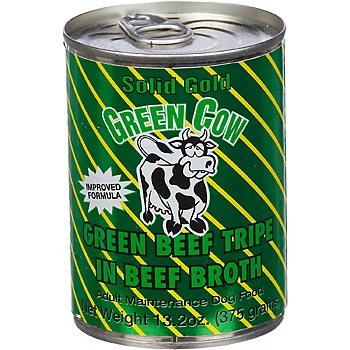 Solid Gold Green CowTripe Canned Dog Food 12 Pack
Solid Gold Green CowTripe Canned Dog Food 12 Pack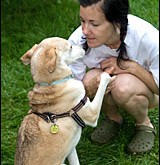 Dog Tricks – Dog Training Level 1
Dog Tricks – Dog Training Le
Dog Tricks – Dog Training Level 1
Dog Tricks – Dog Training Le
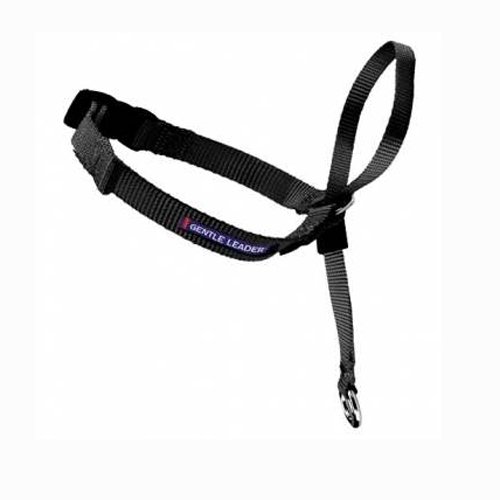 Hate to Walk Your Pulling Dog? Heres the Instantaneous Solution (Really!)
Credit: thatmutt.c
Hate to Walk Your Pulling Dog? Heres the Instantaneous Solution (Really!)
Credit: thatmutt.c
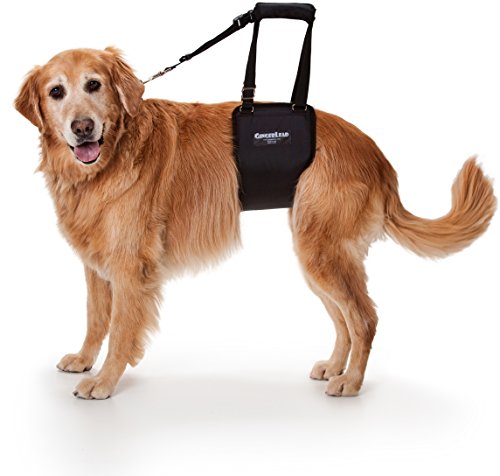 Senior Dog Harness
There are many reasons that
Senior Dog Harness
There are many reasons that
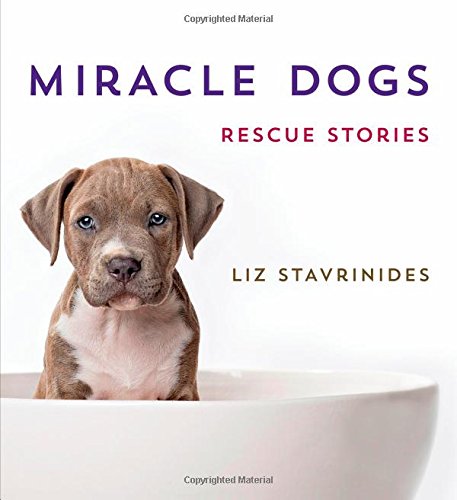 Why You Should Adopt A Rescue Dog For Your Family
Credit: Flickr: Ian Phillips
Why You Should Adopt A Rescue Dog For Your Family
Credit: Flickr: Ian Phillips
 Clipping your Pet’s Nails
Clipping your Pet’s Nails
Clipping your Pet’s Nails
Clipping your Pet’s Nails
Copyright © 2005-2016 Pet Information All Rights Reserved
Contact us: www162date@outlook.com